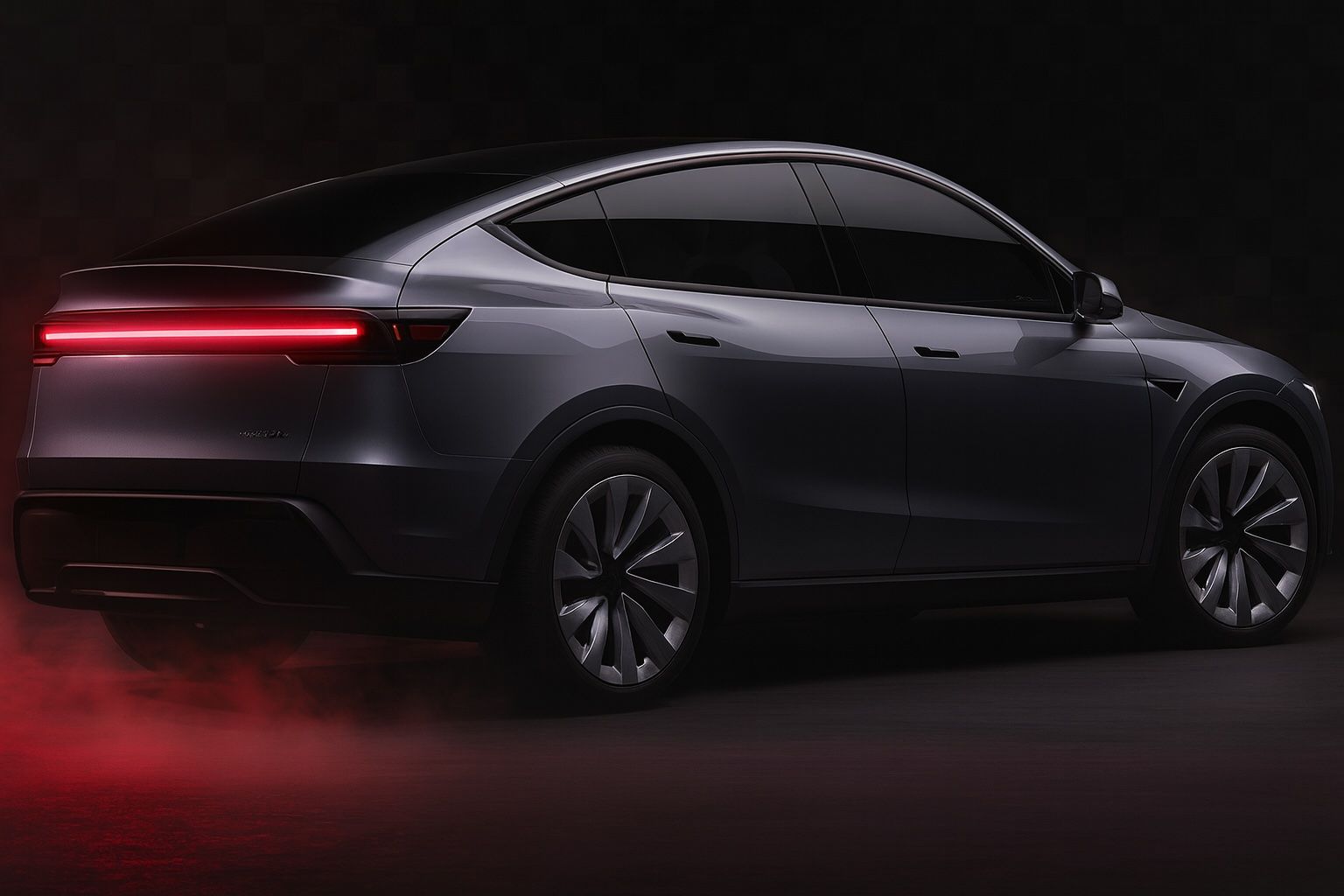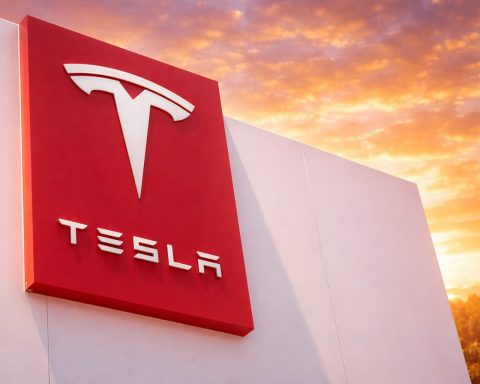- Record‑shattering quarter: On 2 October 2025 Tesla announced it produced 447,450 vehicles and delivered 497,099 in Q3 2025—its largest delivery quarter ever and the first time deliveries exceeded production [1]. Deliveries were ~7% higher than the 463,000 units delivered a year earlier, snapping a two‑quarter decline and beating consensus expectations of 443k–448k vehicles [2] [3]. Analysts attribute the surge largely to U.S. buyers rushing to take advantage of a federal EV tax credit that expired in October, leading to an inventory drawdown [4].
- Model breakdown: Tesla delivered 481,166 Model 3/Y vehicles and 15,933 combined Model S/X/Cybertruck/Semi in Q3 [5]. It built 435,826 Model 3/Y and 11,624 other vehicles, implying it drew down inventory to satisfy demand [6]. About 2 % of deliveries were under operating leases [7].
- Energy storage boom: Tesla deployed 12.5 GWh of energy storage—almost twice the 6.9 GWh deployed a year earlier—breaking another company record [8]. This shows diversification beyond automobiles.
- Competition snapshot:
- BYD (China): Delivered 1.106 million vehicles in Q3 2025, a 2.1 % decline year‑on‑year; September sales fell 5.88 % with plug‑in hybrid sales plunging 25.6 %, though battery‑electric sales grew 24.31 % [9]. The company cut its 2025 sales target amid intense price competition and shifting demand [10].
- Rivian: Produced 10,720 vehicles and delivered 13,201 in Q3, aligning with its outlook; it narrowed full‑year guidance to 41,500–43,500 deliveries [11].
- General Motors: Sold 66,501 EVs in Q3, a record 103 % year‑on‑year increase; the Chevrolet Equinox EV became the best‑selling non‑Tesla EV in the U.S. and helped GM achieve year‑to‑date EV sales of 144,668 (up 105 %) [12] [13].
- Ford: Delivered ~30,000 EVs in Q3, up 30.2 % year‑over‑year; the Mustang Mach‑E posted its best quarter with 20,177 units, the F‑150 Lightning delivered 10,005 units and E‑Transit van deliveries plunged to 430 [14].
- Volkswagen: Through the first half of 2025 the VW Group delivered 465,500 battery‑electric vehicles (BEVs), a 47 % jump; one in five vehicles sold in Western Europe was electric, though North America and China deliveries fell due to tariffs and competition [15]. As of this report no official Q3 numbers were available.
- Analyst sentiment: Prior to the release, analysts expected about 441k–448k deliveries and flagged that a surge in Q3 might “pull forward” demand from future quarters due to the expiring tax credit [16]. Ken Mahoney of Mahoney Asset Management warned that after the credit expired “there will be a gap in demand” and Deutsche Bank analysts predicted that strong Chinese demand could cushion the inevitable drop in Q4 [17].
- Outlook: Estimates for full‑year 2025 deliveries ranged from 1.6 million (Reuters) to 1.85 million (Nasdaq) vehicles [18] [19]. Many analysts expect Q4 deliveries to decline as the tax credit boost fades, though energy storage deployments may continue to grow. Tesla plans to release full financial results on 22 October 2025, which may provide guidance on Q4 and 2026 [20].
Tesla’s Q3 2025 Performance in Context
Production and Deliveries
The Q3 2025 delivery report shows a dramatic turnaround for Tesla. After declining deliveries in Q1 (336,681 vehicles) and Q2 (384,122) [21], the company delivered 497,099 vehicles, smashing its prior record of roughly 463,000 from Q3 2024 [22]. Tesla produced 447,450 vehicles, meaning it drew down inventory by more than 49,000 units and reduced days‑supply. This reversal indicates Tesla intentionally built up inventory in previous quarters to prepare for the end‑of‑quarter tax‑credit rush. Notably, only 2 % of Q3 deliveries were under operating leases [23], suggesting most customers purchased outright or financed through loans.
Model‑Level Breakdown
Tesla’s bread‑and‑butter Model 3/Y lineup accounted for over 96 % of deliveries. The company delivered 481,166 Model 3/Y vehicles while producing 435,826 [24], demonstrating strong global demand. Deliveries of other models—including the premium Model S/X, the still‑ramping Cybertruck and the Semi—totaled 15,933, with production of 11,624 [25]. Tesla did not provide a model‑by‑model breakdown, but industry watchers believe the majority of these were Cybertruck deliveries as the ramp continued in Texas.
Energy Storage and Diversification
Tesla’s energy division quietly set its own record. The company deployed 12.5 GWh of energy storage in Q3 2025, nearly double the 6.9 GWh deployed a year earlier [26]. This suggests a growing revenue stream from Megapack deployments as utilities and commercial customers invest in grid‑scale storage. The record deployment highlights Tesla’s diversification beyond vehicle sales, which could help smooth revenue as the EV market matures.
How Tesla’s Rivals Performed
BYD: Growth Slowdown in China’s EV Champion
Chinese giant BYD remained Tesla’s closest global rival but faced headwinds in Q3 2025. According to GuruFocus, BYD sold 1.106 million vehicles during the quarter—a 2.1 % decline year‑on‑year—and September sales were down 5.88 % [27]. The drop was driven by a sharp slump in plug‑in‑hybrid (PHEV) sales (‑25.6 %), although battery‑electric (BEV) sales still grew 24.31 % and overseas sales more than doubled [28]. The company reportedly cut its 2025 sales target due to price wars and shifting consumer preferences [29]. While BYD still outsold Tesla in total units, its slowdown highlights the impact of China’s intensifying price competition and the migration from PHEVs to BEVs.
Rivian: Steady Ramp at a Smaller Scale
American start‑up Rivian produced 10,720 vehicles and delivered 13,201 in Q3 2025 [30]. The company narrowed its full‑year 2025 delivery guidance to 41,500–43,500 vehicles [31]. Rivian’s numbers remain a fraction of Tesla’s but demonstrate steady progress toward profitability.
General Motors: Equinox EV Drives a Record Quarter
General Motors posted a blockbuster quarter with 66,501 EVs delivered, more than double its Q3 2024 tally [32]. The new Chevrolet Equinox EV was the best‑selling non‑Tesla EV in the U.S., helping GM achieve 144,668 EV sales year to date (up 105 %) [33]. Crossovers and SUVs also posted record third‑quarter sales [34]. GM executive Duncan Aldred said the company now has “the best EV line‑up in the market” and is well positioned as federal incentives wind down [35].
Ford: Mustang Mach‑E and F‑150 Lightning Shine
Ford delivered around 30,000 EVs in Q3 2025, a 30.2 % increase over the same quarter last year [36]. The Mustang Mach‑E logged its best quarter ever with 20,177 deliveries, and the F‑150 Lightning sold 10,005 units, while the E‑Transit van saw a steep decline to 430 units [37]. Including hybrids and plug‑ins, Ford’s electrified sales reached 85,789 vehicles (up 19.8 %) [38]. The company credited the impending tax‑credit expiration and its leasing strategy for the surge [39].
Volkswagen Group: First‑Half Surge, Third‑Quarter Unclear
Volkswagen’s Q3 EV results were not available at the time of writing. However, the company reported delivering 465,500 BEVs in the first half of 2025, a 47 % year‑on‑year increase [40]. One in five vehicles sold in Western Europe was electric, though North America and China deliveries fell due to tariffs and competition [41]. Without Q3 numbers, it is unclear whether VW maintained its growth pace or faced the same post‑credit slowdown as U.S. peers.
Market Reaction and Analyst Commentary
Pre‑release Expectations and Investor Sentiment
Ahead of the Q3 report, analysts surveyed by Reuters and Nasdaq expected Tesla to deliver around 441k–448k vehicles [42] [43]. They noted that the expiring U.S. $7,500 federal tax credit for leased vehicles would create a pull‑forward of demand in Q3 and a potential drop in Q4 [44]. Nasdaq cited that Q3 deliveries would still likely be below last year’s 462,890 vehicles, but predicted Tesla would “crush expectations” because of improved Model Y production lines, a rebound in Chinese sales and lower interest rates [45]. The strong results indeed exceeded forecasts and were generally celebrated by investors, with some analysts calling it the first concrete sign that Tesla’s demand remains resilient.
Cautions About Q4
Despite the Q3 beat, analysts remained cautious about Q4. Ken Mahoney warned that “there will be a gap in demand” once the tax credit expires [46]. Deutsche Bank analysts said the Chinese market might cushion some of the decline but still expected a sequential drop [47]. Market watchers expect Tesla’s Q4 deliveries to fall back toward the low‑400k range unless new incentives, refreshed models (such as the rumoured Model Y “Juniper”) or price cuts spur demand. The upcoming earnings call on 22 October 2025 may provide guidance on 2026 volumes and the progress of new models.
Supply‑Chain and Strategic Developments
During Q3 Tesla continued to adjust its production lines and supply chain. The company reopened its Fremont lines in late August after retooling the Model Y and reportedly began ramping production of the Cybertruck at its Texas Gigafactory. The huge inventory drawdown suggests Tesla successfully scaled output ahead of the tax‑credit deadline. The energy storage record indicates that supply constraints for battery packs have eased and that Tesla is shifting more cells into stationary applications [48]. Additionally, sources report that Tesla has been negotiating new lithium supply agreements and exploring thrifty battery chemistries to reduce costs, but details were not publicly disclosed during Q3.
Forecasts for Q4 2025 and Beyond
Most analysts expect Q4 deliveries to decline from Q3 because the U.S. tax credit pulled forward demand. Reuters estimated full‑year 2025 deliveries around 1.6 million vehicles [49], while Nasdaq projected 1.85 million [50]. Achieving the higher end would require an average of roughly 435k vehicles per quarter in Q4, which may be challenging without further incentives. On the other hand, Tesla’s record energy storage deployment and the ramping of the Cybertruck could offset some vehicle volume weakness.
Looking further ahead, investors will watch for:
- New models: Tesla is expected to launch a refreshed Model Y (code‑named Juniper) and possibly a cheaper next‑generation compact car in 2026. These vehicles could reignite growth in a maturing EV market.
- International expansion: Gigafactories in Germany, China and Mexico may expand capacity. Demand in China remains critical; analysts think Q4 sales there may be softer but still strong relative to Europe [51].
- Energy business: With energy storage deployments accelerating, Tesla could see the energy segment contribute a larger share of profits in 2026 [52].
- Policy tailwinds: Potential new incentives in Europe or Asia and the United States’ evolving regulatory landscape could create new demand surges or headwinds.
Conclusion
Tesla’s Q3 2025 delivery report stunned investors with record numbers and marked the first time deliveries surpassed production. The results were boosted by a rush to lock in U.S. tax credits, enabling Tesla to deliver 497,099 vehicles—an all‑time high. While the quarter demonstrates the company’s ability to scale production and draw down inventory, analysts caution that the surge may have pulled forward demand from Q4. Competitors showed mixed results: GM and Ford delivered record EV volumes, Rivian continued its measured ramp, BYD’s sales growth slowed, and Volkswagen’s Q3 performance remains unclear. As the EV market matures and policy incentives ebb and flow, Tesla’s diversification into energy storage and potential new models will likely determine whether it can sustain growth in 2026 and beyond.
References
1. www.businesswire.com, 2. www.businesswire.com, 3. www.nasdaq.com, 4. www.reuters.com, 5. www.businesswire.com, 6. www.businesswire.com, 7. www.businesswire.com, 8. electrek.co, 9. www.gurufocus.com, 10. www.gurufocus.com, 11. www.tipranks.com, 12. electriccarsreport.com, 13. insideevs.com, 14. insideevs.com, 15. www.autoweek.com, 16. www.reuters.com, 17. www.reuters.com, 18. www.reuters.com, 19. www.nasdaq.com, 20. www.businesswire.com, 21. www.nasdaq.com, 22. www.businesswire.com, 23. www.businesswire.com, 24. www.businesswire.com, 25. www.businesswire.com, 26. electrek.co, 27. www.gurufocus.com, 28. www.gurufocus.com, 29. www.gurufocus.com, 30. www.tipranks.com, 31. www.tipranks.com, 32. insideevs.com, 33. electriccarsreport.com, 34. electriccarsreport.com, 35. insideevs.com, 36. insideevs.com, 37. insideevs.com, 38. insideevs.com, 39. insideevs.com, 40. www.autoweek.com, 41. www.autoweek.com, 42. www.reuters.com, 43. www.nasdaq.com, 44. www.reuters.com, 45. www.nasdaq.com, 46. www.reuters.com, 47. www.reuters.com, 48. electrek.co, 49. www.reuters.com, 50. www.nasdaq.com, 51. www.reuters.com, 52. electrek.co










